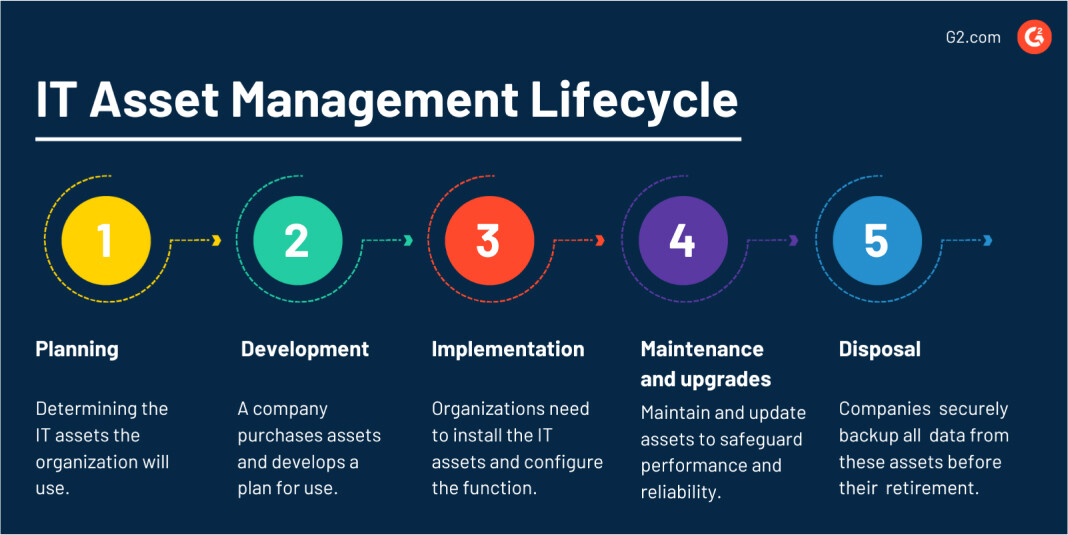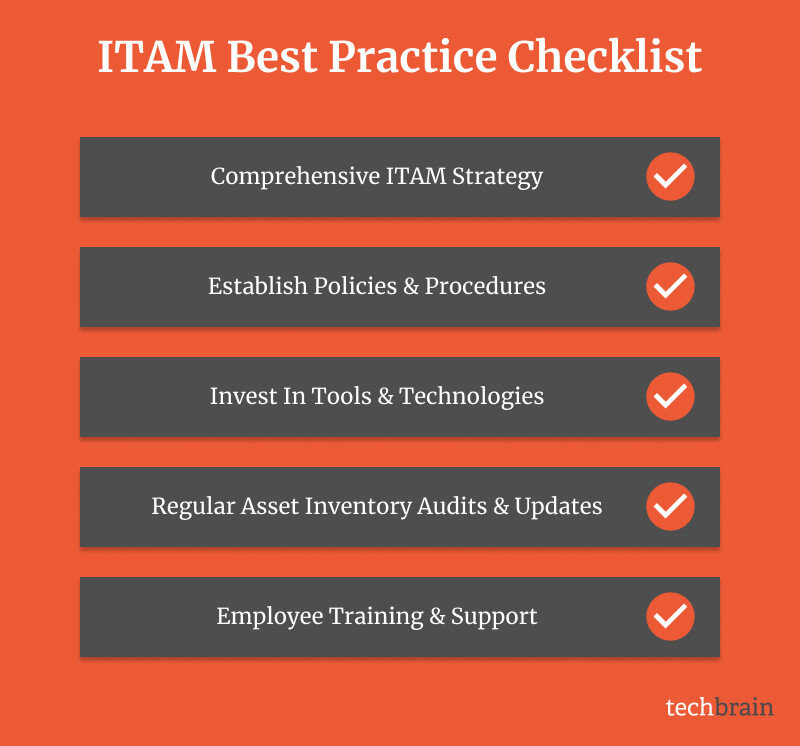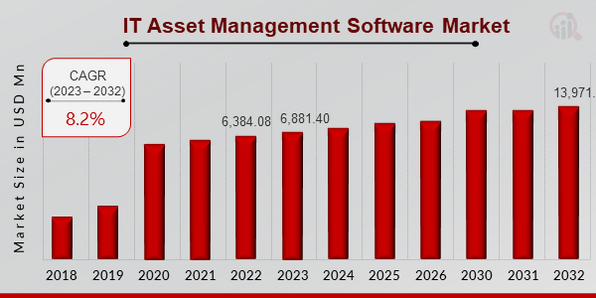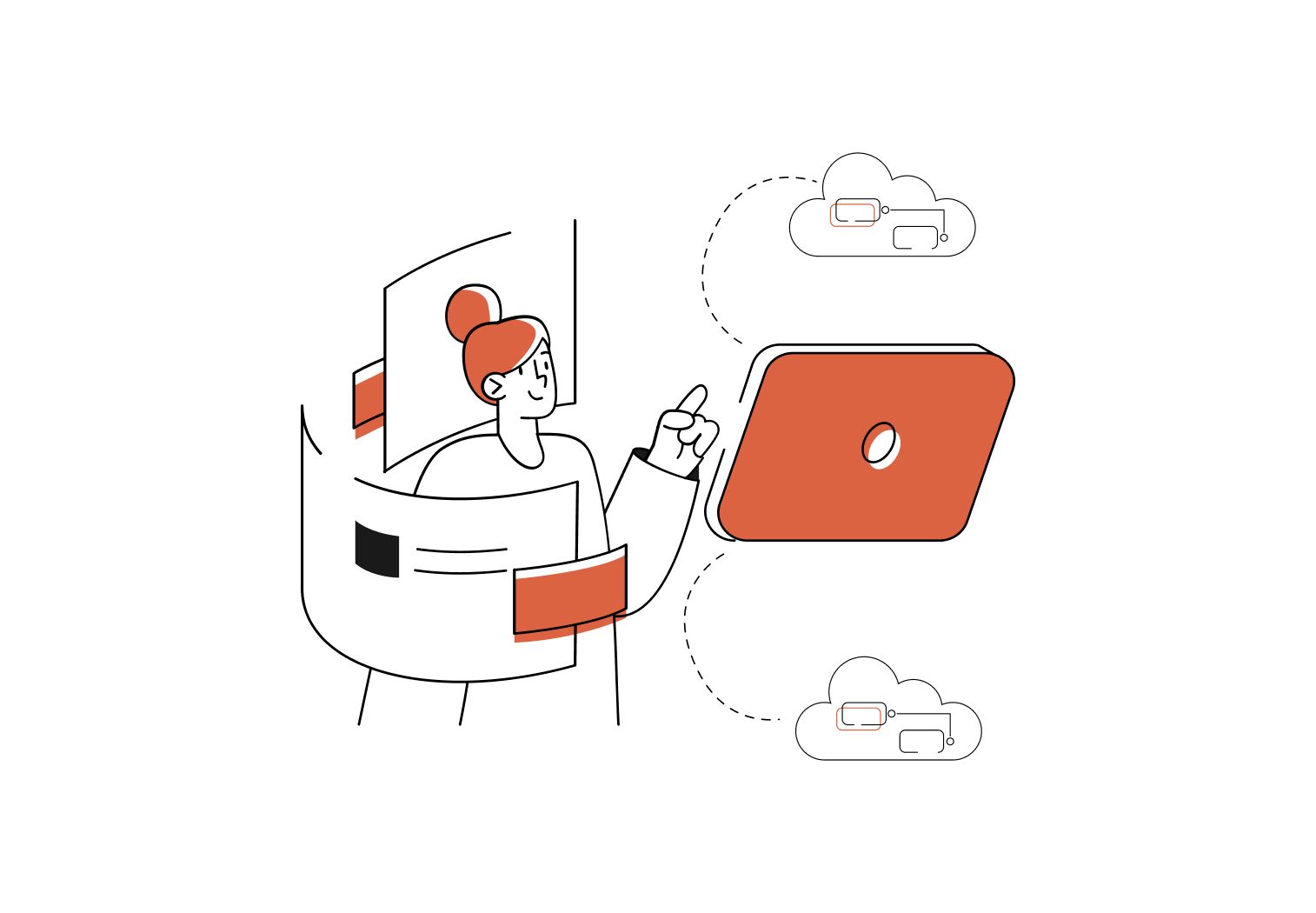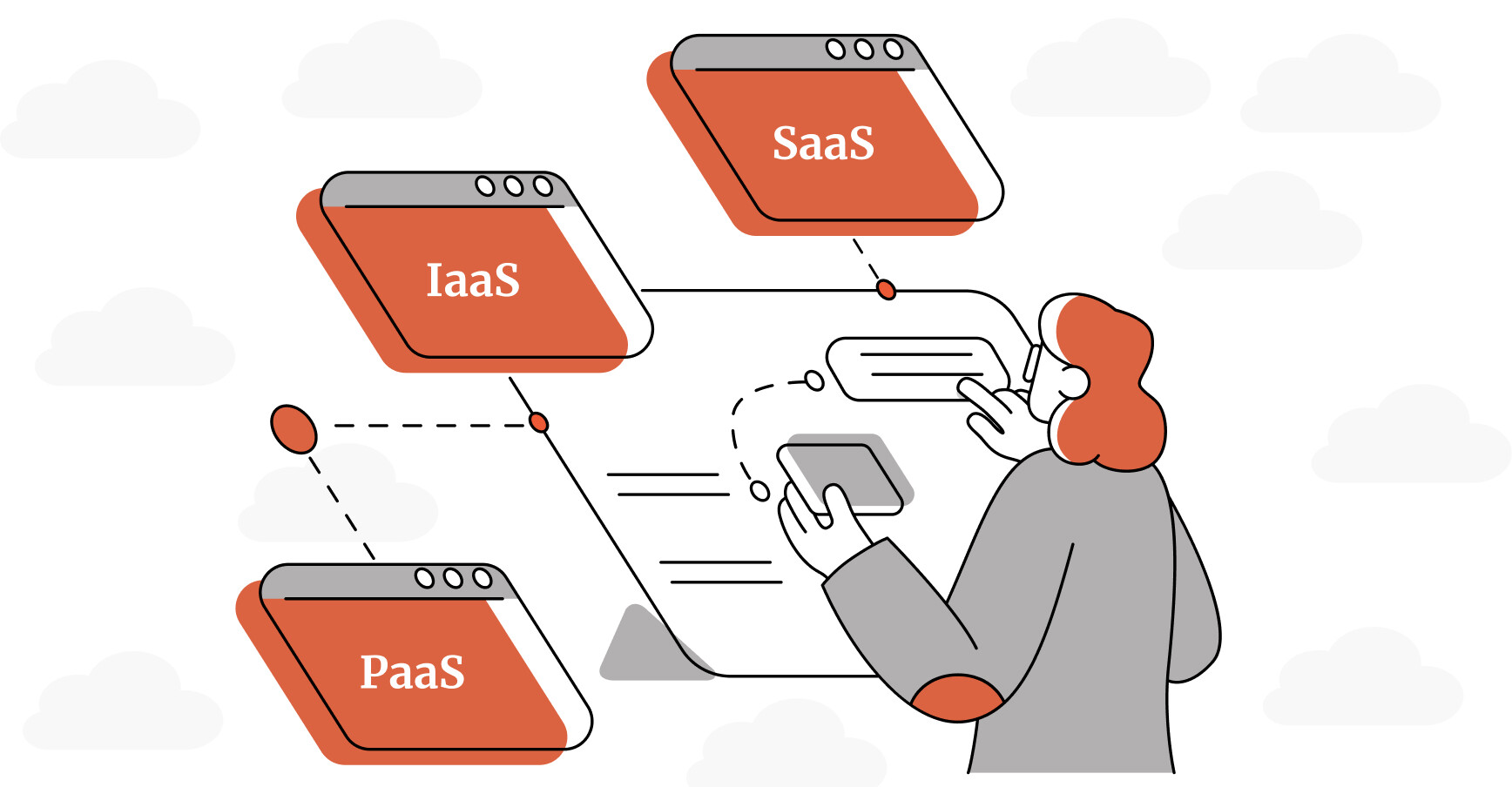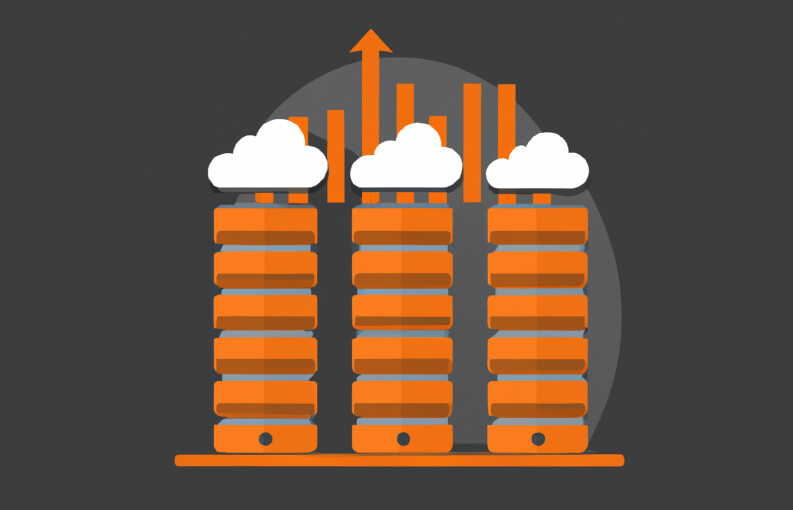In this article
In today’s fast moving business world, getting your IT Asset Management (ITAM) in order is a critical part of achieving success. Businesses are looking for ways to drive innovation while keeping costs under control. ITAM has all the tools you need to help you achieve those goals – and with the right strategy you can really get your IT infrastructure humming.
Let’s get real – tossing together a comprehensive IT Asset Management strategy just isn’t as simple as it sounds, especially when you’re trying to wrangle with a complex and constantly shifting IT landscape.
A lot of businesses are struggling with rising costs, they’re having a hard time keeping track of & managing all their assets across multiple locations, and there’s an increasing risk of getting caught out for non-compliance with software licensing agreements.
In this post let’s take a closer look at what ITAM is all about. We’ll be covering the main components, the benefits, and some real-life examples of how businesses have used ITAM to boost growth and stream-line operations. We’ll also take a peek at some of the latest developments in ITAM and how all this might shape things for the industry going forward.
In this post let’s take a closer look at what ITAM is all about. We’ll be covering the main components, the benefits, and some real-life examples of how businesses have used ITAM to boost growth and stream-line operations. We’ll also take a peek at some of the latest developments in ITAM and how all this might shape things for the industry going forward.
Let’s get started.
What is IT Asset Management (ITAM)?
IT Asset Management (ITAM) – sometimes shortened to just ITAM – is a systematic approach to managing and optimising your organisation’s IT assets throughout their whole lifecycle. Think of it like this: it covers everything from the hardware, software and digital assets like licences and subscriptions, right down to the paper clips and ink cartridges.
At its core, ITAM is about getting visibility and control over what you’ve got. That means you need to know what you’ve got, where it is, who’s using it and how it’s being used. With that information, you can decide what to do with your assets, how to get the most value out of them and how to make sure you’re staying within the law and avoiding costly fines and lawsuits.
The Importance of ITAM
As your business grows, so does the complexity of your IT infrastructure. And that can lead to all sorts of challenges:
- Costs going up and up as you buy, maintain and upgrade your IT assets
- Trouble keeping track of what you’ve got – across multiple sites and departments
- A higher risk of getting in trouble for non-compliance with software licensing agreements
- Reduced efficiency because you’ve got outdated or under-used assets cluttering up your system
The latest figures from the likes of Gartner are predicting another big year for IT spending in 2024, as businesses continue to invest in new technology to stay ahead of the competition. But with all this investment comes a question: how can we really get the most out of our IT spend?
And that’s where ITAM comes in. With a robust ITAM strategy in place, you can really start to get the most out of your IT investment while keeping your costs under control and ensuring you’re staying compliant.
Key Components of ITAM
So, what makes up a complete ITAM strategy? In this article, we’ll cover the key components that will help you really get to grips with ITAM. These components work together to give you a complete picture of your IT assets – from procurement to disposal.
Hardware Asset Management
Hardware Asset Management is all about tracking and managing your physical IT assets – like computers, servers and network devices.
Inventory Management
It’s all about keeping an accurate and up-to-date inventory of all your hardware assets – including where they are, what condition they’re in and who owns them.
Lifecycle Management
Managing your assets right from procurement to disposal – so you can keep them properly maintained and up to date.
Getting hardware asset management right takes a combination of tools and processes. You might want to use asset tracking software to keep an eye on your inventory, make sure you’re following maintenance and support procedures to keep your assets in good nick, or have a clear plan for disposing of assets in a secure and compliant way.
Software Asset Management
Software Asset Management is all about managing your software licences and making sure you’re complying with licensing agreements.
Licence Management
Tracking and managing your software licences – to make sure you’re up to date and in line with vendor agreements.
Compliance Management
Regular audits to check for any non-compliance issues – and taking action if you spot any.
Software asset and compliance management can be tricky, what with licensing agreements often being complex and varied – depending on the vendor or product. So it’s really important to have a clear understanding of your agreements and to regularly review your software usage to stay on the right side of the law.
Mobile Asset Management
Mobile Asset Management is all about managing your mobile devices – like smartphones and tablets.
Device Management
Tracking and managing your mobile devices – to make sure they’re properly set up, secure and well maintained.
Security Management
Protecting user access to sensitive data in the event of a device being lost or stolen is critical, so implementing measures like device encryption and remote wipe capabilities is a must.
With mobile devices becoming more and more integral to the way we do our jobs, having a robust mobile asset management system in place is now a top priority. That means having a set of policies and procedures that cover guidelines for acceptable use, security requirements and support processes and actually taking the time to put them into place.
Cloud Asset Management
Managing assets in the cloud – that means things like AWS, Azure and Google Cloud – is a huge part of ITAM these days. And to make it manageable, you need to be able to keep a clear eye on all your cloud assets, from virtual machines to vendor data and storage – and that’s where cloud inventory management comes in.
Cloud Inventory Management
Keeping an accurate inventory of all your cloud assets is a bit of a challenge, especially when the cloud is a dynamic place and things can change all the time. So you need a system for tracking and managing all those assets, including virtual machines, vendor data, storage and apps.
Cost Optimisation
To get the most value out of your cloud investment, you need to be regularly monitoring and adjusting your cloud usage. That means keeping a close eye on costs and making sure you’re not getting taken for a ride by vendors.
Cloud asset management can be tough – and the cloud’s dynamic nature isn’t the only challenge you’ll face. Managing assets in the cloud is an ongoing process, and it can be hard to keep on top of it. But if you’ve got the right tools and processes in place, you’ll be able to do it a lot more easily.
The Benefits of ITAM
As your business grows so does the complexity of your IT infrastructure – and with that comes a whole host of problems like rising costs, lost productivity and security risks. That’s where ITAM comes in – by giving you a clear view of all your IT assets, it helps you make the most of your investments, reduces risks and keeps you competitive.
Implementing a comprehensive ITAM strategy is a big deal, and it can bring a whole load of benefits:
- Cost optimisation: ITAM helps you understand what you’re spending on IT, so you can cut back on waste and make the most of your budget.
- Enhanced compliance: With ITAM, you can make sure you’re sticking to software licensing agreements and industry regulations – which is not only the right thing to do, but also helps prevent costly penalties and damage to your reputation.
- Improved security: Accurate asset inventory and regular vulnerability assessments mean you can spot potential security risks before they materialise, and get rid of them before they cause you any real problems.
- Informed decision-making: With real-time data on your IT assets, you can make informed decisions about your technology investments and resource allocation – rather than just flying by the seat of your pants.
- Increased efficiency and productivity: ITAM means you’ll be able to keep your IT assets properly maintained, configured and used, which in turn means you can avoid downtime and get more done with the time you have available.
Challenges & Best Practices in Implementing ITAM
Getting a solid IT Asset Management system off the ground can be a real struggle – especially when your business is in the midst of rapid growth and you’ve got a million other things demanding your attention.
The problems you’ll face are numerous like dealing with IT systems that are often legacy and in a state of constant flux, the fact that many different tools just aren’t designed to play nicely with one another, making sure you’re on top of all the regulatory requirements and compliance issues, and keeping track of IT assets scattered across multiple locations and with remote workers.
To get over these challenges and make the most of ITAM, you need to adopt some best practices:
- Developing a complete ITAM strategy
- Putting policies and procedures in place for asset lifecycle management
- Investing in the right ITAM tools and technologies
- Regularly auditing and updating asset inventory
- Providing training and support for your employees
Having effective policies and procedures in place for asset lifecycle management is key – and that means covering everything from procurement to disposal, and ensuring you’re sticking to licensing agreements and regulations. That includes having clear guidelines for asset acquisition, config, asset repair/maintenance, and retirement, as well as procedures for dealing with security and compliance issues.
Investing in the right tools and technologies is also crucial for a successful ITAM implementation – and that includes things like asset discovery and inventory management tools, software licence management solutions, mobile device management platforms and cloud asset management tools. When you’re selecting tools, you need to think about things like ease of use, integration with existing systems, scalability and whether they meet your needs and budget.
Regular audits and updates of your asset and software inventory – that’s some really important stuff. This means doing the usual like conducting physical counts, checking up on software to make sure it’s all accounted for and reviewing your asset data to keep everything up to speed. Keeping that asset inventory current lets you make smart decisions and sidestep issues like compliance and security risks.
And last but not least – training and supporting your employees. You need to make sure they know how to get the most out of your ITAM practices – that means teaching them about your ITAM policies, procedures and best practices, and giving them the resources and support they need to handle and use IT assets in a way that’s both efficient and secure.
Future Trends in ITAM
The world of ITAM is constantly evolving – driven by new tech and shifting business priorities. As we look to the future, there are several key trends emerging that are going to shape the way organisations approach ITAM in the coming years.
These trends, backed up by industry research and expert insights, point towards a more integrated, automated and service-oriented future for ITAM – with the rise of Asset-as-a-Service (AaaS) being a key part of that.
Asset-as-a-Service (AaaS): A New Way to Think About IT Assets
AaaS is changing the game when it comes to managing IT assets – instead of shelling out big bucks upfront for new gear, businesses pay as they go on a subscription basis. IDC is calling it : by 2024, 50% of enterprise IT assets will be consumed as a service, which is a pretty big deal. This model’s got a lot to offer.
Lower Upfront Costs: With AaaS, businesses skip the big upfront costs that come with buying new gear and instead pay a predictable monthly or annual fee for access to the assets they need.
More Flexibility & Scalability: AaaS lets businesses scale up or down as needed, without having to buy and manage yet more hardware or software.
Easier Access to New Tech: With AaaS, businesses can get their hands on the latest and greatest without having to constantly upgrade their own gear – which helps keep them competitive and on top of the latest innovations.
As AaaS becomes more mainstream, ITAM strategies are going to need to evolve. This might mean new tools and processes for managing assets in a subscription-based model – and new skills for IT teams.
Integrating ITAM with other IT Management Practices
ITAM and IT Service Management (ITSM) are really becoming one and the same, just like ITAM and IT Operations Management (ITOM). By integrating these functions businesses get a more holistic approach to managing IT assets and services.
By linking ITAM into ITSM, businesses can make sure their IT assets are in good working order and properly maintained so that they can do their job – delivering IT services better, reducing the risk of the whole system grinding to a halt and just generally making things run more smoothly.
Similarly, by getting ITAM and ITOM to play nice, businesses get a better grip on their IT infrastructure – from on-site kit to cloud assets. This all adds up to businesses being able to run their IT operations more efficiently, saving cash and getting more out of their systems.
Making the Most of AI & Machine Learning for Asset Discovery & Optimisation
Artificial Intelligence (AI) & Machine Learning (ML) are revolutionising ITAM in huge ways – they’re making it possible to automate lots of stuff in whole new ways. This tech is being put to use in three key areas of ITAM: automating asset discovery and inventory management, predictive maintenance & support and making the most of software licences and cloud computing resources.
AI & ML can automatically go trawling through your business network to find and inventory all the assets – which saves you time & improves the accuracy of the data. You get a clearer picture of what you’re working with, makes decision making easier and helps keep risk & resource allocation in check.
By having a good look at data on your assets, AI & ML can work out when they’re likely to go wrong or need a bit of TLC – so your IT teams can fix problems before they turn into downtime or disruptions. This all adds up to IT services being more reliable and better performing.
AI algorithms can take a look at software usage data to spot when licences are being underused or not used at all – which gives you the chance to get more bang for your buck and keep an eye on licensing agreements. ML can also recommend changes to how you allocate cloud resources based on how they’re being used and performing – which helps you get the most out of your cloud investments.
As AI and Machine Learning start gaining more traction within IT asset management, it’s likely that the market is going to see some huge growth over the next few years. Estimates from Research and Markets indicate the global IT Asset Management market is looking to reach a whopping USD 13.97 billion by 2032 – and it’s the increasing adoption of AI and ML that’s expected to be the driving force behind all that growth.
As these technologies keep getting better and more sophisticated, they’re going to become the go-to tools for businesses looking to simplify and streamline their asset management processes, make better decisions, and keep pace with the rapidly changing landscape of IT.
As these technologies continue to advance and mature, they will play an increasingly crucial role in helping businesses streamline their asset management processes, make data-driven decisions and adapt to the ever-evolving IT landscape.
Harnessing the Potential of ITAM for Business Growth
Effective IT Asset Management is more important than ever for Australian businesses with big IT infrastructures. But putting an ITAM strategy in place is not without its challenges – from dealing with complex IT environments to integrating disparate systems and staying on top of compliance.
To overcome these hurdles, businesses need a clear ITAM strategy that lines up with their overall goals – plus strong policies and procedures for asset lifecycle management and ongoing training and support for staff. Unlocking the Full Potential of ITAM – Partner with a Trusted IT Service Provider
At the end of the day the secret to really getting the most out of IT Asset management, tends to come down to one thing – and that is partnering with a trusted and seasoned IT service provider. With years of hands-on experience with IT Asset lifecycle management and access to advanced tools that help make the process smoother, a company like TechBrain can help steer you through the tricky bits of ITAM, develop custom strategies that actually suit your business, and get you results that really make a difference.
By really making the most of a well-implemented ITAM, businesses can do more than just simplify their operations and cut costs – they can also get ahead of the competition in a market that’s getting increasingly crowded and frantic.

